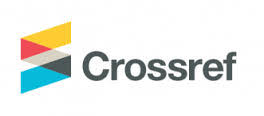تصحيح الأخطاء الشفهية في صفوف اللغة الإنجليزية: إتجاهات الطلبة
DOI:
https://doi.org/10.59759/educational.v4i2.502الكلمات المفتاحية:
Error Correction، Oral Error Correction، Students’ Attitudesالملخص
هدفت الدراسة الحالية الى الكشف عن إتجاهات طلبة الصف العاشر في المدارس الحكومية في لواء المزار الجنوبي نحو تصحيح معلميهم لاخطائهم الشفهية كما انها هدفت الى الكشف عن إتجاهات الطلبة نحو أنواع الأخطاء الشفهية التي يصححها معلميهم داخل الغرفة الصفية. تعد هذه الدراسة دراسة وصفية تحليلية حيث اعتمدت على الإستبانة كاداة لجمع البيانات عن اتجاهات الطلبة. تكونت الأداة من 25 فقرة معتمدة على مقياس لكيريت الخماسي كما تم التحقق من صدق الأداة وثباتها قبل توزيعها على الطلبة. تم توزيع الإستبانة على 342 طالبا وطالبة من طلبة الصف العاشر في المدارس الحكومية في لواء المزار الجنوبي (ذكورا واناثا). تم تحليل النتائج إحصائيا عن طريق استخراج المتوسطات الحسابية والانحرافات المعيارية وحساب اختبار "ت" واختبار Levenes Test. بينت النتائج أن الطلبة لديهم إتجاهات ايجابية نحو تصحيح أخطائهم الشفهية من قبل معلميهم كما بينت ان الطلبة لديهم كذلك إتجاهات ايجابية نحو انواع الأخطاء التي يصححها معلميهم داخل الغرفة الصفية وهي تصحيح الأخطاء في المفردات واللفظ والقواعد على التوالي. كما بينت النتائج عدم وجود فروق ذات دلالة إحصائية عن مستوى الدلالة (0.05 ≥ α) في إتجاهات الطلبة نحو تصحيح الأخطاء الشفهية داخل الغرفة الصفية تعزى لمتغير الجنس وكذلك عدم وجود فروق دالة إحصائيا في اتجاهات الطلبة نحو أنواع الأخطاء التي يصححها معلميهم تعزى لمتغير الجنس. يحتاج الطلبة من معلميهم ان يقوموا بتصحيح اخطائهم الشفهية سواء كانت أخطاء في الكلمات, او اللفظ, او القواعد. يعد إرتكاب الأخطاء جزء لا يتجزا من عملية تعلم اللغات الأجنبية. لذلك على المعلمين استخدام افضل الطرق في تصحيح أخطاء الطلبة بحيث يكونوا مرتاحين لذلك. اوصت الدراسة بعمل دراسة أخرى تستطلع راي معلمي اللغة الانجليزية نحو تصحيح الأخطاء عند الطلبة.
الكلمات الدالة: تصحيح الأخطاء؛ تصحيح الأخطا الشفهية؛ إتجاهات الطلبة
التنزيلات
المراجع
Ahangari, S., & Amirzadeh, S. (2011). Exploring the teachers’ use of spoken corrective feedback in teaching Iranian EFL learners at different levels of proficiency. Procedia - Social and Behavioral Sciences, 29(2), 1859–1868.
Alamri, B., & Fawzi, H. (2016). Students’ Preferences and Attitude towards Oral Error Correction Techniques at Yanbu University College, Saudi Arabia. English Language Teaching, 9(11), 59.
AlGhafri, M., Mirza, C., & Gabarre, C. (2023). Oral Corrective feedback: A case study from Oman. Arab World English Journal, 14 (3) 406-417.
Alhaysony, M. (2016). Saudi EFL Preparatory Year Students’ Perception about Corrective Feedback in Oral Communication. English Language Teaching, 9(12), 47-61.
Al Hosni, S. (2014). Speaking Difficulties Encountered by Young EFL Learners. International Journal on Studies in English Language and Literature (IJSELL), 2(6), 22-30.
Alkhammash, R., & Gulnaz, F. (2019). Oral Corrective Feedback Techniques: An Investigation of the EFL Teachers' Beliefs and Practices at Taif University. Arab World English Journal, 10 (2). 40 -54. DOI:
https://dx.doi.org/10.24093/awej/vol10no2.4
Allwright, D., & Kathleen M. B. (1991). Focusing on Language Classroom. Cambridge University Press.
Bang, Y. (1999). Reactions of EFL students to oral error correction. Journal of Pan-Pacific Association of Applied Linguistics, 3, 39-51.
Brown, H. D. (2001). Teaching by Principle: An Interactive Approach to Language Pedagogy. Longman
Candlin, C., & Mercer, N. (2001). English Language in Its Social Context. New York:Routledge
Chaudron, C. (1977). A descriptive model of discourse in the correctional treatment of learners’ errors. Language Learning, 27, 29-46.
Chomsky, N. (1959). Review of Verbal behavior by B.F. Skinner. Language 35, 26-58.
Corder, S. P. (1967). The Significance of Learners’ Errors. International Review of Applied Linguistics 5(4), 161-170.
Corder, S. P. (1981). Error Analysis and Interlanguage. Oxford University Press.
Dulay, H., & Burt, M. (1974). Errors and strategies in child second language acquisition. TESOL Quarterly, 8(1), 129-136.
Dulay, H., & Burt, M. (1974). Errors and Strategies in Child Second Language Acquisition. TESOL Quarterly, 8(2), 129-136.
Ellis, R. (1994). The Study of Second Language Acquisition. Oxford University Press.
Gamlo, N. (2019). EFL Learners’ Preferences of corrective Feedback in Speaking Activities. World Journal of English Language. 9(2), 28-37
Haghani, M. (2012). Corrective feedback and the students’ uptake. ELT Weekly, 4(11). http://www.eltweekly.com/elt-newsletter
Harmer, J. (2001). The practice of English language teaching. London/New York.
Katayama, A. (2007). Japanese EFL Students’ preferences toward correction of classroom oral errors. Asian EFL Journal, 9(4), 289-305.
Karisma, Y., & Arif, B. (2022). Exploring Grammatical Errors in Speaking of Students University: A case Study. International Journal of Education and Linguistics, 4,2, 145-153.
Krashen, S. D. (1982). Principles and Practice in Second Language Acquisition. Pergamon.
Krejcie, R., & Morgan, D. (1970). Determining sample size for research activities, educational and psychological Measurement, 30, 607-610.
Kurnia, R., & Jabu, B., & Munir, (2023). The Pronunciation Errors Made By students of First Grade Senior high School Frater Makassar. International Journal of Business, English, and Communication (IJOBEC). 1, 31-35.
Lighbown, P. M. & Spada, N. (1999). A response to Truscott’s “What’s wrong with oral grammar correction? The Canadian Modern Language Review 55(4), 457-467.
Lyster, R., & Ranta, L. (1997). Corrective feedback and learner uptake: Negotiation of form in communicative classrooms. Studies in Second Language Acquisition, 19(1), 37-66.
Mosbah, G. A. (2007). Treatment of Classroom Oral Errors: A Comparative Study Between Native and Non-native Speaking Teachers. Published Doctoral Dissertation
Park, G. (2010). Preference of Corrective Feedback Approaches Perceived by Native English Teachers and Students. The Journal of Asia TEFL, 7(4), 29-52
Saeb, F. (2017). Students’ and Teachers’ Perceptions and Preferences for Oral Corrective Feedback: Do They Match? International Journal of Applied Linguistics & English Literature, 6(4), 32-44
Schachter, J. (1988). Second language acquisition and its relationship to Universal Grammar. Applied Linguistics. 9(3), 219-235.
Selinker, L. (1972). Interlanguage. International Review of Applied Linguistics 10(3), 209-230.
Shi, G. (2017). Attitudes towards Error correction, Corrective Moves and Their Effects in College English Classrooms in China. International Journal for Innovation Education and Research 5, 32-39.
Tabatabaei, O. & Banitalebi, A. (2011). Feedback Strategies in Foreign Language Reading Classes. Asian Culture and History, 3(2), 59-70.
Truscott, J. M. (1999). What’s wrong with oral grammar correction? The Canadian Modern Language Review, 55, 437-456 .
http://dx.doi.org/10.3138/cmlr.55.4.437
Zahid Hurain, (2023). Grammatical Errors made by students in Speaking English. European Journal of Linguistics, 2, 53-72.


